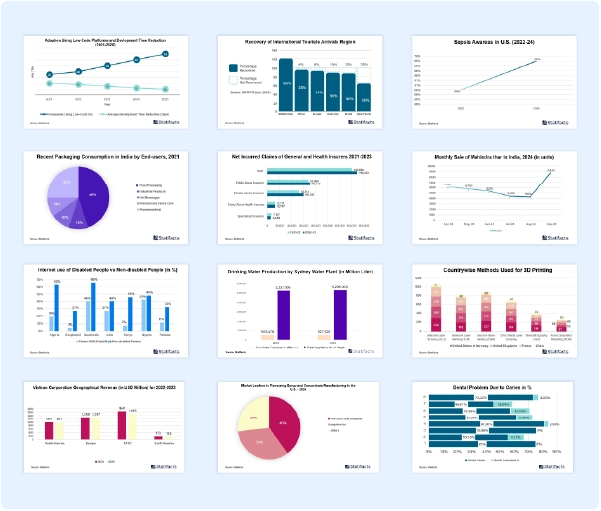The Canada sniper rifle market size accounted for USD 16.65 million in 2024 and is expected to exceed around USD 28.72 million by 2034, growing at a CAGR of 5.6% from 2025 to 2034.
Canada Sniper Rifle Market Report Highlights
- The up-to-100-meter range segment accounted for the largest revenue share in 2024 for the Canada sniper rifle market.
- The military application segment dominated the Canada sniper rifle market in 2024.
- The law enforcement application segment is expected to grow at the fastest CAGR during the forecast period.
The Canada sniper rifle market refers to the production, distribution, and application of sniper rifles, which a high-precision, long-range rifles. Requirements include high accuracy, reliability, mobility, concealment, and optics for anti-material, anti-personnel, and surveillance uses by military snipers. Snipers can provide the location and disposition of the enemy’s breaching equipment, fire support platforms, and assault force from a concealed position. Snipers can delay and fix formations using direct fires from long range when unobserved. An extremely powerful weapon, the sniper rifle uses high-caliber ammunition at distances averaging between 400 and 1700 yards. The destructive power of a sniper rifle firing 50-caliber rounds is difficult to overstate. Snipers are trained for the detection, identification, and location of a targeted soldier in sufficient detail for the effective employment of lethal and non-lethal means. The C14 Timberwolf MRSWS is now the main sniper rifle in the Canadian Armed Forces arsenal. It is highly rated by snipers, who like the rifle itself and also the additional effective range and penetration. The 338 Lapau Magnum offers over the C3A1’s 7.62×51mm NATO cartridge.
Industry Valuation and Growth Rate Projection
| Industry Worth |
Value |
| Market Size in 2024 |
USD 16.65 Million |
| Market Size in 2025 |
USD 17.59 Million |
| Market Size by 2034 |
USD 28.72 Million |
| Market Growth Rate from 2025 to 2034 |
CAGR of 5.6% |
Rising defense budget driving the growth of the Canada sniper rifle market. An increase in revenue expenditure ensures that the armed forces remain well-equipped and operationally efficient. The rise in capital outlay highlights the government’s long-term vision for modernization and self-reliance in defense production. Defense spending can stimulate an economy, create jobs, and drive the development of civilian business sectors. Improved R&D investments and strategic policy incentives are important for boosting national security and driving the country’s emergence as a global defense player. In addition to productivity losses, over-investments in military assets have other opportunity costs, including lost environmental and employment opportunities.
According to a report by the Government of Canada, NATO funding, their defense policy, North, Strong, and Free, outlines $8.1 billion in new defense spending over the next 5 years, starting in 2024-25, and $73 billion over the next 20 years.
As Canada announced at the NATO summit in Washington this summer, Canada is committed to spending 2% of its GDP on defense by 2032.
Modernization of defense arsenals driving the growth of the Canada sniper rifle market. Defense modernization focuses on boosting domestic production through reforming procurement policies to prioritize indigenous development, improving R&D, forging strategic partnerships for advanced technology, and integrating network-centric warfare. The modernization priorities of the Army include Soldier lethality, air and missile defense, network, future vertical lift, next-generation combat vehicles, and long-range precision fires.
Modernization of defense refers to strategies adopted by non-western nations during the 19th century to strengthen their economies, militaries, and political systems in response to the pressures of Western imperialism and industrialization. Modernization is the process of adopting something to modern needs and habits, and in military equipmen,t modernization is the continuous process of upgrading existing forces to overmatch adversaries. Strengthening an ability to deter and defeat aerospace threats by modernizing air weapon systems, ensuring the Canadian Armed Forces can sustain a strong military presence across the country, including in Canada’s North, through investments in new infrastructure and support capabilities.
Technological advancement in sniper rifles driving the growth of the Canada sniper rifle market. The sniper rifle has changed markedly since the Second World War. It has the most infantry small arms, become lighter, more accurate, and more durable. Technology will add more possibilities to support and improve sniping capabilities. Technological advancement in sniper rifles benefits includes increased patient education, increased mobility, global knowledge access, environmental impact, customer reach, cost savings, competitive edge, better learning techniques, automation, facilitated learning, career advancement, enhanced productivity, security, increased innovation, efficiency, access to information, and communication. Snipers have the ability to take out targets with pinpoint accuracy due to their highly advanced scopes that allow for greater precision. These factors help the growth of the Canada sniper rifle market.

